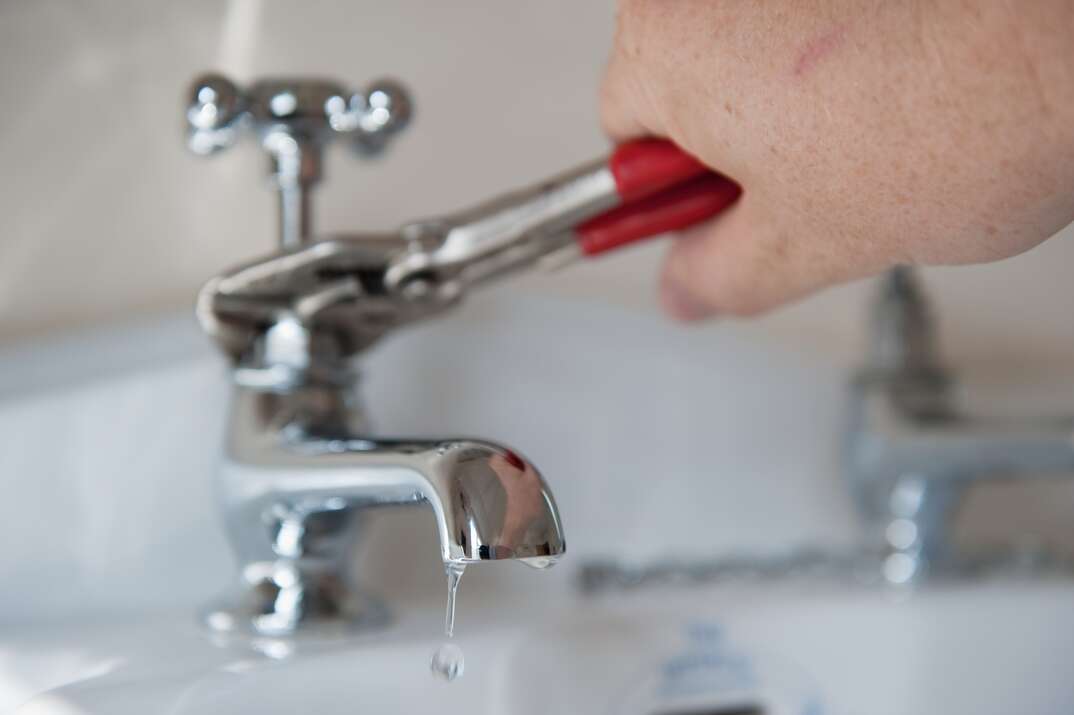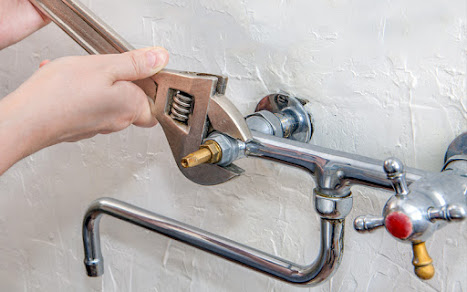Identifying As Well As Taking Care Of Plumbing Noises In Your House
Identifying As Well As Taking Care Of Plumbing Noises In Your House
Blog Article
The author is making a number of good observations about How To Fix Noisy Pipes overall in this article below.

To detect noisy plumbing, it is very important to determine first whether the undesirable audios occur on the system's inlet side-in other words, when water is transformed on-or on the drainpipe side. Sounds on the inlet side have varied reasons: too much water pressure, worn valve as well as tap components, improperly linked pumps or various other devices, incorrectly placed pipe bolts, and also plumbing runs having too many tight bends or other constraints. Sounds on the drainpipe side usually stem from bad place or, just like some inlet side sound, a format containing limited bends.
Hissing
Hissing noise that occurs when a faucet is opened slightly generally signals excessive water pressure. Consult your regional water company if you presume this issue; it will be able to tell you the water stress in your location and also can mount a pressurereducing shutoff on the inbound water supply pipe if necessary.
Thudding
Thudding noise, often accompanied by shuddering pipes, when a faucet or appliance valve is turned off is a condition called water hammer. The sound and also resonance are brought on by the resounding wave of pressure in the water, which all of a sudden has no place to go. Sometimes opening up a shutoff that releases water promptly right into an area of piping including a limitation, elbow joint, or tee fitting can produce the exact same problem.
Water hammer can normally be treated by setting up installations called air chambers or shock absorbers in the plumbing to which the issue shutoffs or taps are linked. These gadgets allow the shock wave created by the halted flow of water to dissipate in the air they include, which (unlike water) is compressible.
Older plumbing systems may have short vertical sections of capped pipe behind walls on faucet competes the very same objective; these can ultimately fill with water, reducing or damaging their efficiency. The remedy is to drain the water supply completely by shutting down the primary water shutoff and opening up all taps. Then open the major supply shutoff and shut the taps one at a time, beginning with the tap nearest the valve and also finishing with the one farthest away.
Chattering or Shrilling
Intense chattering or screeching that takes place when a valve or tap is turned on, and that generally vanishes when the fitting is opened totally, signals loose or defective inner parts. The remedy is to replace the shutoff or tap with a new one.
Pumps and also home appliances such as cleaning makers and dish washers can transfer electric motor noise to pipelines if they are poorly connected. Connect such things to plumbing with plastic or rubber hoses-never stiff pipe-to isolate them.
Various Other Inlet Side Noises
Creaking, squealing, scratching, breaking, and touching typically are brought on by the expansion or tightening of pipes, normally copper ones providing hot water. The noises take place as the pipes slide against loosened bolts or strike neighboring house framing. You can commonly identify the area of the problem if the pipes are subjected; simply adhere to the sound when the pipes are making sounds. More than likely you will discover a loose pipe wall mount or a location where pipes lie so near to floor joists or other mounting items that they clatter against them. Attaching foam pipe insulation around the pipelines at the point of contact should remedy the issue. Make certain bands as well as hangers are protected and provide ample assistance. Where possible, pipe fasteners should be affixed to large architectural aspects such as structure walls rather than to framing; doing so lessens the transmission of vibrations from plumbing to surfaces that can magnify as well as move them. If affixing bolts to framework is inescapable, cover pipelines with insulation or various other resistant product where they get in touch with bolts, and also sandwich completions of brand-new bolts in between rubber washing machines when mounting them.
Correcting plumbing runs that struggle with flow-restricting tight or many bends is a last option that must be taken on only after seeking advice from a knowledgeable plumbing contractor. Sadly, this circumstance is rather common in older houses that may not have been developed with interior plumbing or that have seen numerous remodels, especially by amateurs.
Drain Noise
On the drain side of plumbing, the principal goals are to remove surface areas that can be struck by dropping or rushing water and also to insulate pipelines to include inescapable noises.
In new building, bathtubs, shower stalls, commodes, and also wallmounted sinks as well as containers ought to be set on or versus durable underlayments to decrease the transmission of sound with them. Water-saving commodes as well as taps are much less loud than standard models; mount them rather than older types even if codes in your location still permit making use of older fixtures.
Drains that do not run vertically to the basement or that branch right into straight pipe runs sustained at floor joists or various other framing existing particularly frustrating noise troubles. Such pipes are huge sufficient to radiate substantial vibration; they additionally bring substantial amounts of water, that makes the circumstance even worse. In new building and construction, specify cast-iron soil pipelines (the big pipes that drain pipes commodes) if you can manage them. Their massiveness has much of the sound made by water going through them. Likewise, avoid directing drainpipes in wall surfaces shared with rooms as well as areas where people collect. Walls containing drains must be soundproofed as was described previously, utilizing double panels of sound-insulating fiber board and wallboard. Pipelines themselves can be wrapped with special fiberglass insulation created the function; such pipelines have an impervious plastic skin (in some cases having lead). Results are not constantly satisfying.
WHY IS MY PLUMBING MAKING SO MUCH NOISE?
This noise indeed sounds like someone is banging a hammer against your pipes! It happens when a faucet is opened, allowed to run for a bit, then quickly shut — causing the rushing water to slam against the shut-off valve.
To remedy this, you’ll need to check and refill your air chamber. Air chambers are filled with — you guessed it — air and help absorb the shock of moving water (that comes to a sudden stop). Over time, these chambers can fill with water, making them less effective.
You’ll want to turn off your home’s water supply, then open ALL faucets (from the bathroom sink to outdoor hose bib) to drain your pipes. Then, turn the water back on and hopefully the noise stops! If you’re still hearing the sound, give us a call to examine further.
Whistles
Whistling sounds can be frustrating, as sometimes the source isn’t easily identified. However, if you can pinpoint which faucet or valve that may be the cause, you’ll likely encounter a worn gasket or washer — an easy fix if you replace the worn parts!Whistling sounds from elsewhere can mean a number of things — from high water pressure to mineral deposits. Your best plan of attack here is to give our plumbing experts a call. We’ll be able to determine where the noise is coming from and what the cause may be, then recommend an effective fix!
Cracks or Ticks
Cracking or ticking typically comes from hot water going through cold, copper pipes. This causes the copper to expand resulting in a cracking or ticking sound. Once the pipes stop expanding, the noise should stop as well.
Pro tip: you may want to lower the temperature of your water heater to see if that helps lessen the sound, or wrapping the pipe in insulation can also help muffle the noise.
Bangs
Bangs typically come from water pressure that’s too high. To test for high water pressure, get a pressure gauge and attach it to your faucet. Water pressure should be no higher than 80 psi (pounds per square inch) and also no lower than 40 psi. If you find a number greater than 80 psi, then you’ve found your problem!
Next step is to give us a call in order to install a pressure regulator. Trust us, you don’t want to wait to resolve this issue. Not only is the sound annoying, but high water pressure can be destructive to your home — including damaging certain appliances, like your washer and dishwasher.
Dripping
You might be accustom to the slow quiet drip your kitchen faucet makes. You might have even tuned out your bathroom sink dripping and drabbing all day long — but it’s time to find its cause.
A slow drip could signify a variety of easy to fix issues, such as a worn out O ring, or loose part. And by ignoring the drip, you could be wasting up to 2,000 gallons of water a year! So start conserving water — get it looked at ASAP.
https://www.pwessig.com/blog/2018/december/why-is-my-plumbing-making-so-much-noise-/

Do you really like more info about Why Do My Plumbing Pipes Make A Knocking Noise? Make a short review further down. We'd be glad to know your ideas about this posting. We are looking forward to see you back again soon. Do you know about somebody who is fascinated about Why Do My Plumbing Pipes Make A Knocking Noise? Why not promote it. I praise you for your time. Kindly stop by our blog back soon.
Get An Estimate Report this page